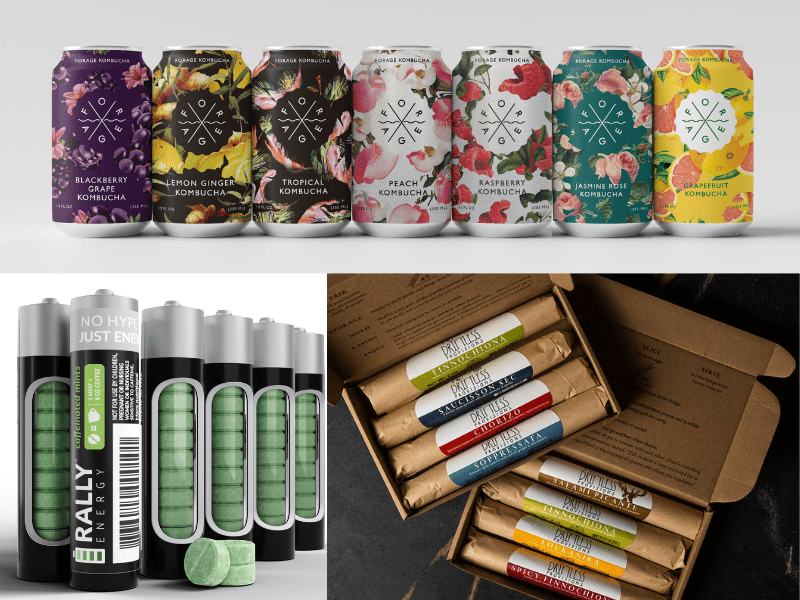Before the COVID-19 pandemic, a whopping 54% of America’s food purchases came from foodservice. Not anymore. With dine-in restaurants, food courts and cafeterias now closed throughout much of the nation, consumers must transfer their food dollars elsewhere. Some are going to brick-and-mortar grocery stores, other sales have migrated online. But perhaps the most significant shift has been the sharp increase in direct-to-consumer food purchases.
In the last six weeks or so, companies that direct-marketed their products before the coronavirus crisis have seen their sales skyrocket, some by 400% to 500%. Since these companies already had the infrastructure in place—online ordering capabilities, delivery, packing and shipping materials, etc.—they’ve been able to, as best they can, handle the surge.
Several factors are driving this trend. For one, even though grocery stores, big-box retailers and club stores like Costco remain open, social distancing makes the shopping experience tough, and many people are skittish about stepping into a retail setting for fear of virus exposure. Also, brick-and-mortar stores are having a hard time keeping their shelves stocked thanks to squeezes throughout the supply chain. To avoid these hassles, many shoppers are instead buying groceries from Amazon and other online retailers—but these places too are struggling to get in product and fill orders in a timely fashion.
Buying food direct from producers eliminates many of these challenges. On top of that, in scary and uncertain times such as these, people want to know where their food comes from and reduce the number of hands it passes through from farm to fork. Joining a CSA, buying beef from a local farmer and ordering snacks straight from artisans accomplish these goals.
Of course, once the pandemic abates, some consumers will go back to their old buying patterns. But plenty will not. Once they’ve connected with a family farm, come to appreciate weekly meat pickup or realized the convenience of food landing on their doorstep, many people will stick with these programs. So, while direct-to-consumer food sales may not maintain their current sky-high levels, they’ll almost certainly be stronger than pre-pandemic.
Realizing this, many food brands and farms that hadn’t direct-marketed and are now suffering sales losses are exploring adopting this model. But how will it work? How can a company pivot to a new and unfamiliar channel? Will the required investments pay off? Should they go it alone or try to team up with another business to spread out the work?
These are all great questions, and the answers will depend on each business’s situation. That’s why it’s wise for food and farm entrepreneurs to connect with other food and farm entrepreneurs to learn how they direct-market or plan to pursue this path. Joining FFI’s weekly virtual huddles is an excellent way to make those connections. Also check out our latest podcast with Bryce and Jen Riemer from Riemer Family Farm to see how they’ve built a successful direct-to-consumer business for their grass-fed, pasture-raised proteins. We also suggest scrolling though our library of past podcasts to find more inspiring and info-packed interviews.
We know we’re amidst a very strange—and for many, very difficult—time in the food industry. Even so, when we all work together, we can not only endure this uncertainly but also emerge stronger.
Edible-Alpha® has created a short course that introduces three key ways to sell online: your own direct to consumer site, Amazon, and other online sites.

Topics include forming your online strategy, logistics and operational considerations, keywords, advertising and promotion, and metrics collection. Our hope is that this overview helps you start or grow your online sales. This course is being offered for free as there is an immediate need for all businesses to branch out to online sales amid this pandemic. View our course here.
And now, our roundup of the best food and beverage finance news, events and resources from around the web…
 Business Model Insights
Business Model Insights
- 4 things to consider before transitioning to e-commerce sales (New Hope Network) COVID-19 has caused e-commerce sales to soar, and they could continue this way for a while. Follow this key advice to avoid getting left behind.
- Employee safety paramount as need for healthy food and beverage products escalates (Food & Beverage Insider)
- Community Supported Agriculture Is Surging Amid the Pandemic (Civil Eats)
 Raising Capital
Raising Capital
- Coronavirus in focus… the supply chain, shopping behavior, innovation and investment (FoodNavigator-USA) “The food industry has moved remarkably quickly to adjust to a sudden and spectacular shift in food consumption towards the home as America goes into lockdown. But there could be significant challenges ahead if more countries block food exports, while movement restrictions could impact the supply of vital labor, say supply chain experts.”
- ‘It’s a damn mess.’ Small businesses are struggling with the coronavirus and the federal loan process (Boston Globe)
- Key Ingredients for Food and Beverage Plant Expansions (Food Industry Executive)
 CPG/National Brands
CPG/National Brands
- How to Stay Visible in Uncertain Times (Forbes) Navigating a global pandemic wasn’t on anyone’s radar, so business owners are figuring it out on the fly. Should they sell more? Stop selling? Slash prices? Keep prices stable? The never-ending questions sparked by external market forces can make business owners panic and take actions that don’t jive with their overall mission and values.
- Helping during coronavirus pandemic earns companies brand awareness, loyalty long term (FoodNavigator-USA)
- 4 keys to finding the right creative source for your packaging (New Hope Network)
 Market Trends
Market Trends
- During pandemic, consumers prioritize product availability over brand loyalty (Food Dive) New survey data shows that 69% of grocery shoppers will purchase a different brand if their first choice isn’t available, spelling opportunity for food and beverage brands looking to broaden their customer base.
- From scratch cooking to home baking: What coronavirus-fueled trends could linger post-pandemic? (FoodNavigator-USA)
- ‘Craft brewers are facing new realities’: US craft beer grew 4% in 2019 – but 2020 will be a difficult year (BeverageDaily)
 Farming and AgTech
Farming and AgTech
- COVID-19-related cattle industry losses in the US estimated at $13.6 Billion (The Cattle Site) New study shows cow-calf producers will see the largest impact, with COVID-19-related losses totaling an estimated $3.7 billion, or $111.91 per head for each mature breeding animal in the U.S. Without offsetting relief payments, those losses could increase by $135.24 per mature breeding animal.
- “We’re in a Save-Our-Farm-From-Collapsing Mode” (Slate) Farmers can’t keep up with surging demand for local produce, but they’re still struggling to replace lost revenue.
- Wisconsin farm bankruptcies rising rapidly as coronavirus weighs heavily on agriculture (Milwaukee Journal Sentinel)
 Deals/M&A
Deals/M&A
- Califia CEO Greg Steltenpohl Talks Investment, Market Dynamics (NOSH) Just two months after overall deal activity in the U.S. food and beverage industry rose 8.7%, today’s reality of stay-at-home orders, rising unemployment and economic contraction makes potential investors tepid—even though some brands are posting higher-than-ever sales.
- Recent transactions in the nutrition and health & wellness industry (Nutrition Capital Network)
- Sakata Seed America acquires Vanguard lettuce program (Produce Blue Book)
COVID-19-Related Resources for Food and Ag Businesses
- Edible-Alpha® Huddles for consultants and entrepreneurs. View our previous weeks huddle notes.
- USDA: Get answers to commonly asked questions about how COVID-19 relates to food.
- Farmers.gov: USDA’s farmer-centric page offers info on the status of USDA Service Centers, options for farmers and ranchers nationwide and answers to frequently asked questions.
- Food Industry Association (known until recently as the Food Marketing Institute): FIA’s website has an entire page dedicated to the virus’s impact on the food industry, including a comprehensive guide “Coronavirus and Pandemic Preparedness for the Food Industry” available for free download.
- Institute for Food Safety at Cornell University: This info-packed webpage provides answers to common food-industry-related questions, a food facility strategy checklist, access to virtual office hours with food safety expects and much more.
- OSHA: The Occupational Safety and Health Administration offers guidelines for businesses operating during the pandemic to help prevent exposure and infection among employees.
- Department of Labor: The Department of Labor’s Coronavirus Resources portal outlines workplace preparation, employees’ rights, wages and leave, and how to respond if the virus enters the workplace.
- Environmental Protection Agency: EPA provides a list of disinfectants approved for use against the SARS strain that causes COVID-19.
- FDA: Get the latest updates on COVID-19 and info on delayed domestic facility inspections and foreign facility inspections.
- Small Business Administration: SBA is offering designated states and territories low-interest federal disaster loans for working capital to small businesses suffering substantial economic injury as a result of COVID-19. Contact your local SBDC center to help navigate disaster loans.
- American Farmland Trust: AFT’s Farmer Relief Fund will award cash grants of up to $1,000 to help farmers weather market disruptions caused by the coronavirus crisis.

